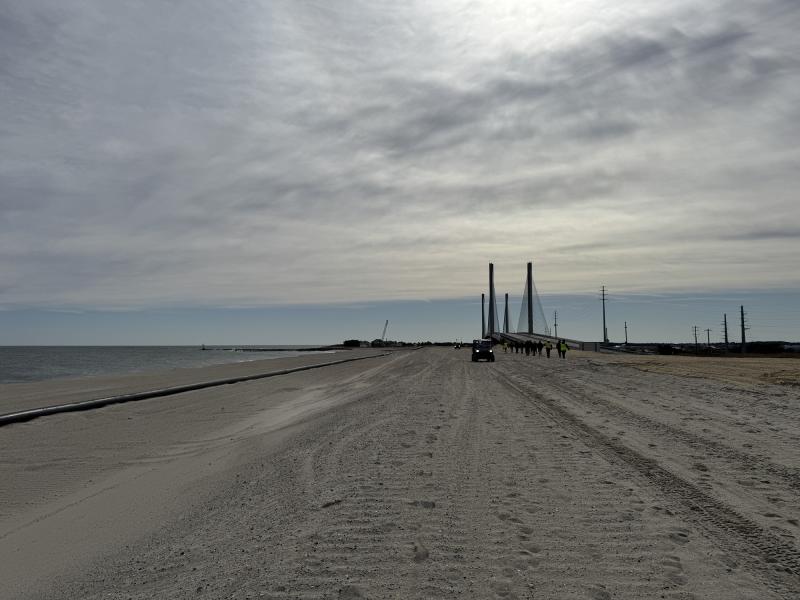IR Inlet replenishment a vital part of DNREC’s coastal resiliency efforts
If you’ve been over the Indian River Inlet bridge in the past few months, you’ve probably seen the pipeline and construction vehicles on the beach just north of the bridge.
The Delaware Department of Natural Resources and Environmental Control and its partners have been hard at work since November pumping sand onto the beach after storms last year breached the dune and put water on Route 1. Aimed at protecting both the beach and the highway, this project is a vital piece of efforts to boost our coastal resiliency, as I witnessed first-hand when I visited earlier this month.
DNREC’s project is now complete, and the before-and-after images of the beach are dramatic. The restoration efforts created a beach that spans 150 feet in width and dunes that are 25 feet wide, bolstering coastal defenses against storms and waves. Engineered beaches and dunes are generally larger than naturally occurring ones, making them a critical part of our plan for protecting coastal communities and responding to climate change.
I am pleased to be able to say the beach will reopen to the public around mid-March, once the beach and dune have been shaped and equipment has been safely moved. About the middle of the year, the sand bypass plant that plays a maintenance role in shifting sand from the south side of the inlet to the north side should be operational for the first time in a few years. Then the U.S. Army Corps of Engineers will begin a follow-up phase of the replenishment project later this year, planning to place more sand as part of a complementary aspect that will further strengthen the area.
Between DNREC and the Army Corps, about 800,000 cubic yards of sand, equivalent to 65,000 dump-truck loads, will have been used by the time this work is complete. The new beach and dunes will hopefully last for the next six to eight years, while the state and the Army Corps work together on long-term plans for preserving them.
Delaware is the lowest-lying state, and this type of work will only grow in importance as we continue to feel the effects of climate change. I can assure you DNREC will always be there to take the lead when it comes to protecting Delawareans and taking steps to mitigate the impacts of sea-level rise, more severe and frequent storms, and hotter temperatures. We will not compromise or rest when public safety is potentially at risk, just as we will continue to prioritize assisting the Delaware Department of Transportation in keeping our infrastructure in good condition.
I visited the inlet on Feb. 7, just a few days after I became DNREC’s new secretary, and heard directly from DNREC’s dedicated staff and from Corps leaders about the future of the inlet area. One of Gov. Matt Meyer’s top priorities is coastal resiliency – helping prepare all our communities to respond and adapt to climate-related events. This work will benefit public health and our economy, as well as limit the day-to-day disruptions our residents living along the Delaware River, Delaware Bay, Inland Bays and Atlantic Ocean face.
My visit to the inlet was the first of many planned trips around the state to see and to share the work we are undertaking (#FieldTripFridays). While I come to DNREC with a quarter-century of experience in state government – including as the agency’s chief of staff for a few years – I know there are amazing DNREC stories that Delawareans and I can learn more about.
Our state has environment-related hurdles to overcome, but we also have numerous advantages. Chief among them are the hundreds of highly trained and dedicated professionals DNREC is fortunate to employ. I am excited to learn from them and work with them.
I look forward to taking on our state’s environmental challenges, and to preserving, protecting and enhancing Delaware’s environment for current and future generations.












.jpeg)










































